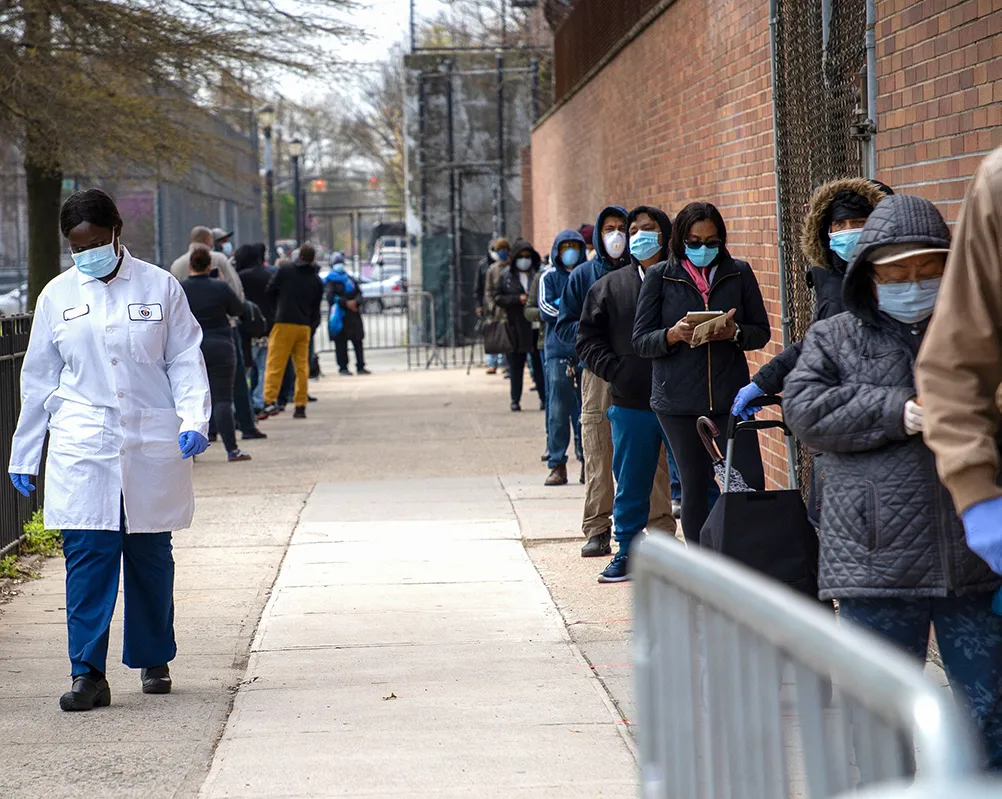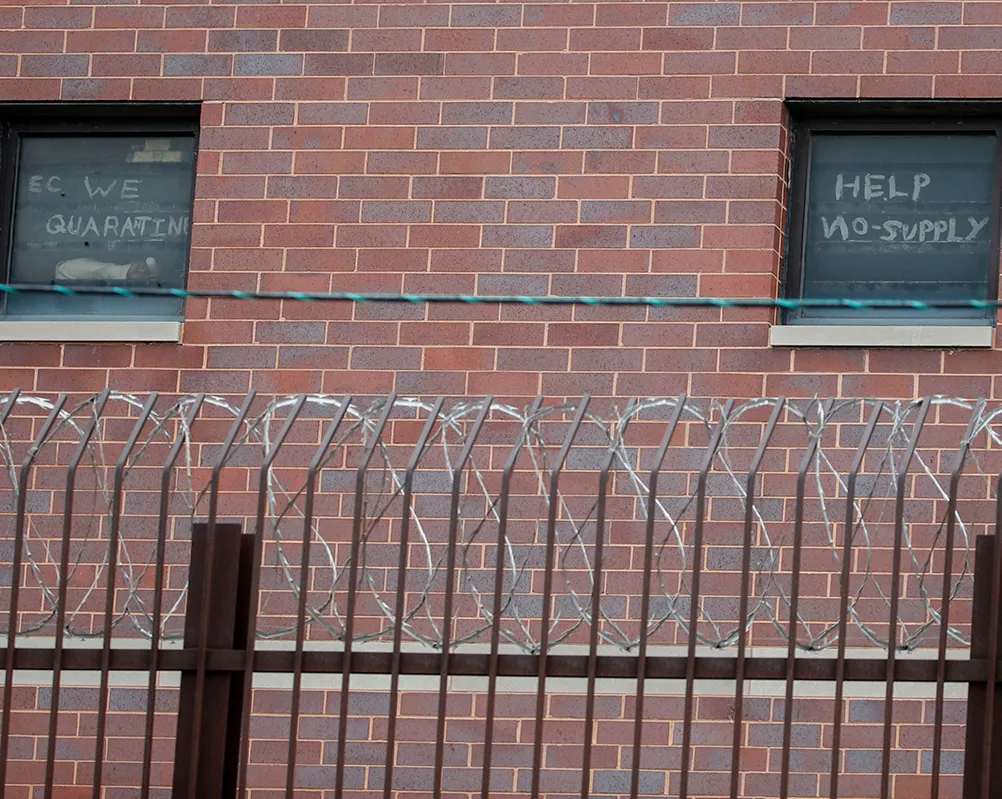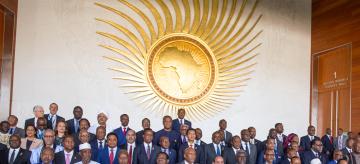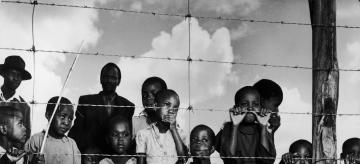People and Society: The Americas
The Americas are an incredibly diverse region with a population defined by an array of cultural heritages, including millions of indigenous peoples living across North and South America.
A demographic feature particular to Latin America is its relatively young, working-age population, which presents an economic opportunity: people, more than resources, are what make countries rich. But those young people face serious challenges—widespread violence, rampant inequality, and poor-quality jobs and education—that hamper their productivity, driving many to migrate.
Centuries of Rich Diversity in Latin America
Revolutionary leader Simón Bolívar, describing South America’s peoples, wrote that it was impossible to say to which human family they belonged. Today, the region is still characterized by a blend of ethnicities, languages—including more than five hundred indigenous languages—and cultural heritages that some countries have embraced to promote national identity. This blend includes about eight hundred different indigenous groups, people of Spanish and Portuguese descent (a legacy of centuries of colonialism), and one of the largest concentrations of people with African ancestry outside Africa (between the sixteenth and nineteenth centuries, more than ten million Africans arrived in the Americas enslaved, with fewer than five hundred thousand brought to North America). There are also descendants of immigrant groups that came to the region to work on sugar and coffee plantations, including nearly two million people of Japanese descent in Brazil and large South Asian populations in Guyana, Suriname, and Trinidad and Tobago.
Latin America’s Goldilocks Challenge
In about thirty years, Latin America and the Caribbean will have an aging population approaching Europe’s—without Europe’s financial safety net to fund increasingly expensive health care and pension systems. (Some countries, including Argentina, Brazil, Chile, Costa Rica, and Uruguay, are already aging.) But right now, much of Latin America has the “Goldilocks” of populations (not too young nor too old), with high numbers of working-age people able to save and invest money during the most productive years of their lives. Experts say governments must create the right conditions for these people to get rich before getting old by improving education and ensuring good jobs exist. But young people are leaving Latin America, especially the Central American countries of El Salvador, Guatemala, and Honduras (the Northern Triangle). Most jobs there are low-paying and exist in the informal sector, meaning workers pay no taxes and receive no benefits. And getting a good education is difficult, leaving rates of young people who neither work nor study—known as ninis in Spanish—as high as 25 percent.
Most Latin American Migrants Stay Close to Home
Discussion of migration in the Americas often focuses on migrants heading north from Mexico or Central America to the United States. For good reason: rampant violence and economic hardship in those countries caused the number of immigrants to the United States to surge in 2019, overwhelming migrant shelters and creating a humanitarian crisis at the border. But this represents just one facet of the region’s migration story. In fact, in recent years, 70 percent of people leaving their home country in South America have stayed in South America. Of the four million Venezuelans displaced by the country’s instability—which, according to the UN, has generated the largest exodus in the region’s modern history—80 percent have remained in Latin America. Neighboring Colombia, which has mostly kept its borders open, hosts the most Venezuelans. Meanwhile, millions of migrants in the region actually stay in their own countries: Colombia has long had the world’s highest number of internally displaced persons, people who have fled their homes without crossing borders. The UN reports about 7.8 million people, 16 percent of the country’s population, have been displaced by political violence and natural disasters.
How Health Care Works Around the Region
A spectrum of health-care systems is on display in the Americas. In Cuba and Canada, the government fully funds health care, and the two countries have some of the region’s best health outcomes, such as high life expectancies and low infant mortality rates. The United States has a mix of systems (insurance offered through private companies and, in part, by the government) that cover different groups of people but leave twenty-eight million people uninsured. While health outcomes in the United States are generally good, average life expectancy declined from 2016 to 2018 in a trend driven by deaths from drug overdose, suicide, and liver disease. Many countries in Latin America—like Chile, Colombia, and Mexico—also offer a combination of public and private insurance options, with the percentage of people unable to access health services ranging from 5 percent in Uruguay to 26 percent in Colombia and higher in countries like El Salvador and Peru. Haiti has one of the weakest health-care infrastructures in the region and suffers the worst health outcomes. Since 2010, natural disasters and a rare cholera outbreak have overwhelmed the country’s already underfunded health-care network.
COVID-19 Exacerbates New York City’s Health-Care Inequalities
New York City’s minority, immigrant, undocumented, and poorest residents disproportionately suffered as the city became the global epicenter of the COVID-19 pandemic. In April 2020, Black New Yorkers died from the virus at a rate more than twice that of white New Yorkers. And residents in some low-income neighborhoods of the Bronx, Brooklyn, and Queens faced fatality rates ten times higher than those in Manhattan’s wealthiest neighborhoods. This disparity was due in part to unequal health-care access; in New York, many minority, immigrant, and low-income residents rely on public hospitals, which were already understaffed and underfunded when the pandemic hit, and overwhelmed facilities with a surge of cases. Meanwhile, many in these communities have struggled to pay for health care amid the unprecedented economic crisis resulting from the pandemic. An estimated 50 percent of New York’s undocumented residents have lost their jobs during the pandemic, and most are ineligible for government relief due to their citizenship status.
U.S. Prisons Unable to Control COVID-19
The United States makes up just 4 percent of the world’s population yet accounts for nearly 25 percent of the global prison population—a reality made ever direr during COVID-19. Prisons are particularly dangerous during a pandemic given the challenges of social distancing in many facilities. As of September 2020, prisons accounted for the fifteen largest COVID-19 clusters in the United States, with over 125,000 incarcerated Americans contracting the disease—on par with the total numbers for many European countries. Some facilities have reported more than 65 percent of inmates testing positive. Prisoners are over five times more likely than the average American to contract COVID-19 and three times more likely to die from the virus. This threat is especially severe for Black and Latinx individuals, who disproportionately account for a majority of the United States’ incarcerated population.
The Americas Are Less Catholic, but Still Christian
Christianity is by far the most prevalent religion in the Americas, and, in Latin America, Catholicism is its most popular denomination. For most of the twentieth century, 90 percent of Latin Americans identified as Catholic, and today almost 40 percent of the world’s more than one billion Catholics come from the region. Catholicism’s numbers, however, are on the decline in the Americas. Despite the election of the first pope from the Americas in 2013, just 69 percent of Latin American adults now say they are Catholic. Meanwhile, nearly 20 percent of Latin American adults now identify as Protestant—a major regional, religious shift with political ramifications. In countries like Brazil, for example, evangelical Protestants—the country’s fastest-growing religious group—provide fervent electoral support for right-wing politicians like current President Jair Bolsonaro. Most evangelicals favor a conservative agenda on sexual and family values, introducing bills in Brazil’s Congress that would recriminalize same-sex marriage, for example.
Women and Girls in the Americas Face Health and Safety Risks
Women and girls face distinct challenges in the Americas, including maternal and reproductive health risks and high rates of violence. In Latin America and the Caribbean, the percentage of girls under eighteen entering into child marriage or early union has hovered around 25 percent for the past decade, defying a downward trend elsewhere. The rate of teenage pregnancies in Latin America and the Caribbean are higher than much of the rest of the world, behind only sub-Saharan Africa. Unsafe abortions result in 10 percent of Latin America’s maternal deaths, as access to abortion is limited and, in several countries, criminalized. Health risks extend outside Latin America, particularly for minority populations. In the United States, the maternal mortality rate is on the rise, with Black women three to four times more likely to die from pregnancy-related issues than their white counterparts. Women and girls in the region also face high rates of violence: fourteen of the twenty-five countries with the highest rates of femicide—gender-based murder—are in Latin America, where surveys show up to one-half of women say they’ve experienced intimate partner violence. Meanwhile, in Canada, indigenous women made up about 4 percent of the female population in 2011 but for years were victims of 16 percent of murders.
Climate Change Disproportionately Affects Vulnerable Populations
Experts who compile lists of countries susceptible to climate change often rank countries and territories in the Caribbean, such as Haiti, Jamaica, and Puerto Rico near the top. Their economies rely on climate-dependent industries like tourism, and devastating storms that discourage visitors are increasingly threatening their peoples’ livelihoods. Beyond the Caribbean, vulnerable populations are already grappling with fundamental societal shifts related to climate change. In Louisiana, which is losing coastal land to rising sea levels and devastating storms, those who can’t afford to move inland face fewer job opportunities and neglected infrastructure. And indigenous peoples in northern Canada and Alaska who depend on hunting—for food and economic survival—are increasingly challenged by melting sea ice, scarce prey, and changes to animals’ migration patterns.
Diverse Indigenous Peoples Face Similar Challenges
The Americas are the ancestral homeland of millions of indigenous peoples. In the United States, more than five million people identify as American Indian or Alaska Native. Nearly 5 percent of Canada’s population identifies as First Nations, Inuit, or Métis. And in Latin America, over eight hundred different indigenous peoples constitute a population of almost forty-five million, and are a majority in Bolivia. The relationships between tribes and national governments vary: the United States recognizes five hundred sovereign indigenous nations, and around two hundred groups live in voluntary isolation in countries like Brazil and Peru. Others have moved to large urban settlements in Quito, Ecuador, or Winnipeg, Canada. Historically, many were forcibly assimilated. In 2008, Canada formally apologized for taking indigenous children from their families and placing them in schools designed to strip them of their language and culture, the last of which closed in 1998. Across the region, indigenous peoples suffer extreme poverty, higher levels of violence, and scarce access to quality education, due in part to a legacy of oppression by European and American settlers and centuries of underfunding from governments.
Navajo Nation Contains COVID-19 Outbreak Despite Limited Government Support
The Navajo Nation—a semiautonomous territory home to nearly two hundred thousand people in the southwestern United States—overcame one of the country’s worst COVID-19 outbreaks despite generations of underfunding from the federal government. Prior to the pandemic, the U.S. government provided the Indian Health Service with just one-sixth of its required annual budget. This coupled with over a century of underfunding of other crucial services such as water, sanitation, and power infrastructure created the conditions for a devastating pandemic. Navajos make up 5 percent of Arizona’s population, but in April 2020 they accounted for 20 percent of the state’s COVID-19 deaths. Despite the death rate and the country’s highest infection rate, Navajo officials controlled the situation through strict lockdowns, testing and contact tracing, and mandating mask-wearing in public. Meanwhile, grassroots campaigns raised millions of dollars to provide community members with food, water, tents, and medicine. On September 8, 2020, the Navajo Nation marked a milestone of no new infections; however, officials caution that cases could rise again in the future.
Soccer and Patriotism Are Inseparable in Latin America
The South American Football Confederation (CONMEBOL) represents just 5 percent of the world’s football (soccer) associations, but contributed almost a quarter of the teams in the 2018 World Cup—a testament to the region’s exceptional talent. What drives this Latin American obsession? The sport has been on the South American continent for more than a century, and Argentina, Chile, and Uruguay were among the first countries to create football associations. In Europe, club teams rule, but in Latin America, fan loyalties often lie with national teams. The Copa América, which pits South American national teams against each other, is the world’s self-proclaimed oldest football tournament of its kind, and Argentina and Brazil have been locked for decades in one of the world’s great football rivalries. At times, this patriotic fervor has spilled over from the soccer pitch. History has labeled the 1969 conflict between El Salvador and Honduras following a series of soccer matches the Football War, despite the fact the four-day conflict had more to do with immigration and politics.









